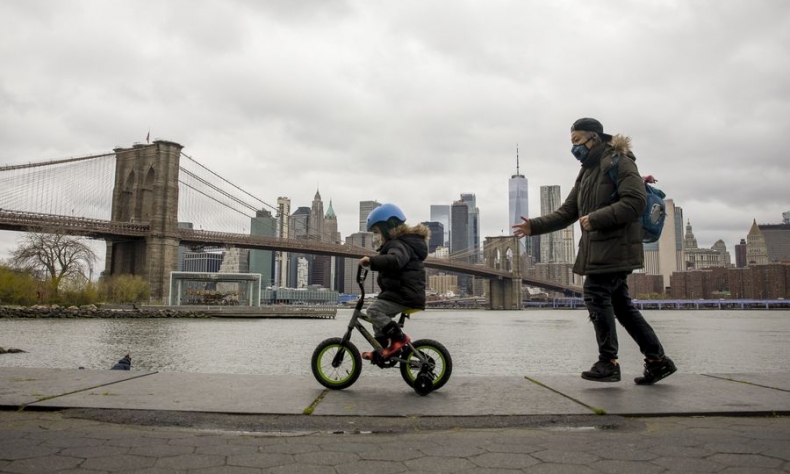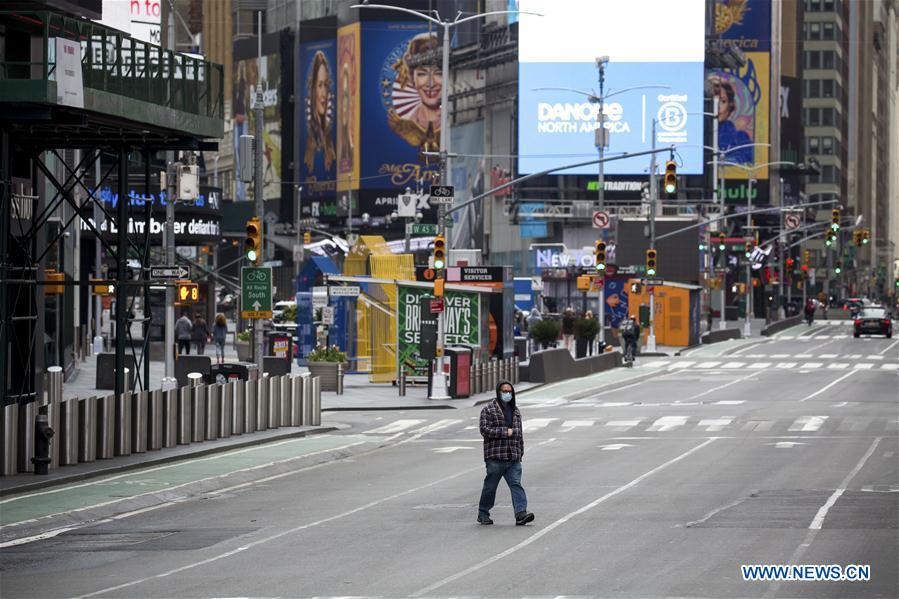How the Coronavirus Situation Changed

The U.S. should have learned from the experience in South Korea and Italy that the virus could cross borders and spread within countries, but they did not and wasted the month of February.
When coronavirus began spreading around China, many of my friends – both Chinese and American – told me: “You should return to America.”
From the start, I resisted this advice. At first, no one knew how quickly it was spreading or that it was spreading through asymptomatic cases. “It’s okay. Most of the cases are from outside of Nanjing,” I said. “If it gets really bad, maybe I’ll go.”
Past epidemics were relatively limited in scope. Ebola and SARS didn’t cross the sea to other continents. Dr. Carl Bergstrom, a professor of biology at the University of Washington, said SARS spread differently: “It didn’t transmit until after people were showing symptoms, and that made it much easier [than coronavirus] to detect it and shut it down with aggressive public health measures.”
I came back to China to celebrate the Spring Festival and meet people. I still thought I could do that!
Then one hundred cases became five hundred, and five hundred became one thousand, then ten thousand. But China was taking aggressive actions against coronavirus, with mass testing, contact tracing, and mandatory self-isolation policy for people moving between cities. People were wearing face masks everywhere, and there were temperature checks at hotels, businesses, and communities.
By that time, it really did seem like I’d be safer from the disease in America – other risks, such as random shootings that were still taking place, notwithstanding. But I was writing columns about coronavirus, and being in China allowed me the best view to see what was happening firsthand.
At that time, telling people I was in China really did shock them. Some people assumed that the whole country was equally badly hit as Wuhan. Others, who knew about local differences but didn’t know Chinese geography, asked how far I was from Wuhan.
While China’s containment measures did give me a sense of reassurance, I was still somewhat on edge because there’s just no way to know everything and be assured. Our knowledge of the novel coronavirus was (and still is) limited because it was only recently discovered, and, no matter how much study is done, it takes quite a while to confirm something to the extent it is scientifically proven.
There seems to be a cycle that I, at least, went through in thinking about coronavirus: a cycle of fear, acceptance, boredom, and then fear again. When coronavirus spread across the whole country, I was fearful: Would I get sick? Would I get stuck in quarantine?
But I still hoped, in late January, that I could meet my friends at restaurants in one week because at that time it still wasn’t clear how long the closures would have to last. Most malls and public spaces closed on January 25, but initially, they had posted messages saying they might open after Spring Festival.
After a little bit, it became clear that the closures were going to be all-encompassing and would have to last much longer than just a week or two. Then I started getting used to the situation. I was just staying inside most of the time, or going to the market to buy goods, or carefully observing the latest developments. I knew that was going to be the immutable situation for some time, and there was nothing to do about it.
Soon enough, it got kind of boring. Looking at the calendar, it looked like there was no end in sight. Now in China and South Korea, businesses are starting to open, though it is still not like the pre-pandemic time. But in February, even the idea of a partial reopening seemed so far off. It still does in much of the world.

The U.S. should have learned from the experience in South Korea and Italy that the virus could cross borders and spread within countries, but they did not and wasted the month of February.
When I arrived back in the U.S. in early March, the idea that America was protected from the virus was starting to collapse. Seattle, Washington had become America’s first hotbed. Cases were beginning to be reported more and more frequently in Los Angeles, New York City, and Washington, DC. I still expected (or hoped) that it wouldn’t get too bad and that I’d still be able to travel. I had planned to go to Cleveland of Ohio, New York City, and Washington, DC. My Chinese friend, hearing I was going to DC, said in late February, “Be careful! Washington is serious.” It was, at the time, a case of geographic confusion among Chinese people; Washington, DC, is on the East Coast, and Washington State, where the outbreak was, is on the West Coast.
But by March 10, by the time my 14-day self-quarantine was almost over, it was undeniable that the situation here was getting bad. Chinese citizens studying or living short-term in the U.S. began heading back to China. On March 11, the NBA suspended its season, and quickly, the NCAA, universities, and the rest of American institutions followed. I canceled all my flights.
The cycle continued. The number of cases in the U.S. was increasing rapidly and eclipsed the totals in the rest of the world. Images from New York City of crowded bars heightened the fear that America was not acting quickly.
Then, fear gave way to acceptance as the number of cases increasing by 25,000 or more a day became commonplace, and people became numb to the news. Boredom followed. There’s a reason alcohol sales in the U.S. have increased by 75% compared to one year ago.
I have seen this cycle happen twice. I have been in the condition of lockdown or semi-lockdown since mid-January. I am fortunate to not have gotten sick and to not know any family members or friends who have gotten ill. A lot of people are suffering real objective harm. Some are in the hospital. Some have died or lost loved ones. Of those who survived, some suffered life-altering damage to their lungs.
But my experience of the lockdown is similar to that of most people in the world and the U.S. Most people, still, have not faced direct personal loss from coronavirus. The number of confirmed cases in the entire world is 2.8 million out of the world population of 7,590 million. Stipulating that the number of cases in most countries is certainly undercounted due to both limits of testing capacity and asymptomatic cases, but even if it is twice or two-hundred times the reported number, the number who got badly sick is still an extremely small proportion of the world’s population.
That doesn’t mean we shouldn’t take action. We should continue to take action to keep it that way. But it does mean that it can be hard for the public to keep going through the ongoing social distancing measures, when many have lost their jobs, are suffering from boredom and loneliness.
Protesters in America (an unrepresentative but loud group) are massing together, demanding the right to have their hair cut. Their tactics are foolish. A good deal of them are going to get sick, and they are clearly and shamefully breaking the law. Many of them are also motivated by toxically partisan politics. But they are also driven by the same boredom and hopelessness as much of the rest of the population.
Mitchell Blatt is a columnist with China.org.cn.
 Facebook
Facebook
 Twitter
Twitter
 Linkedin
Linkedin
 Google +
Google +










